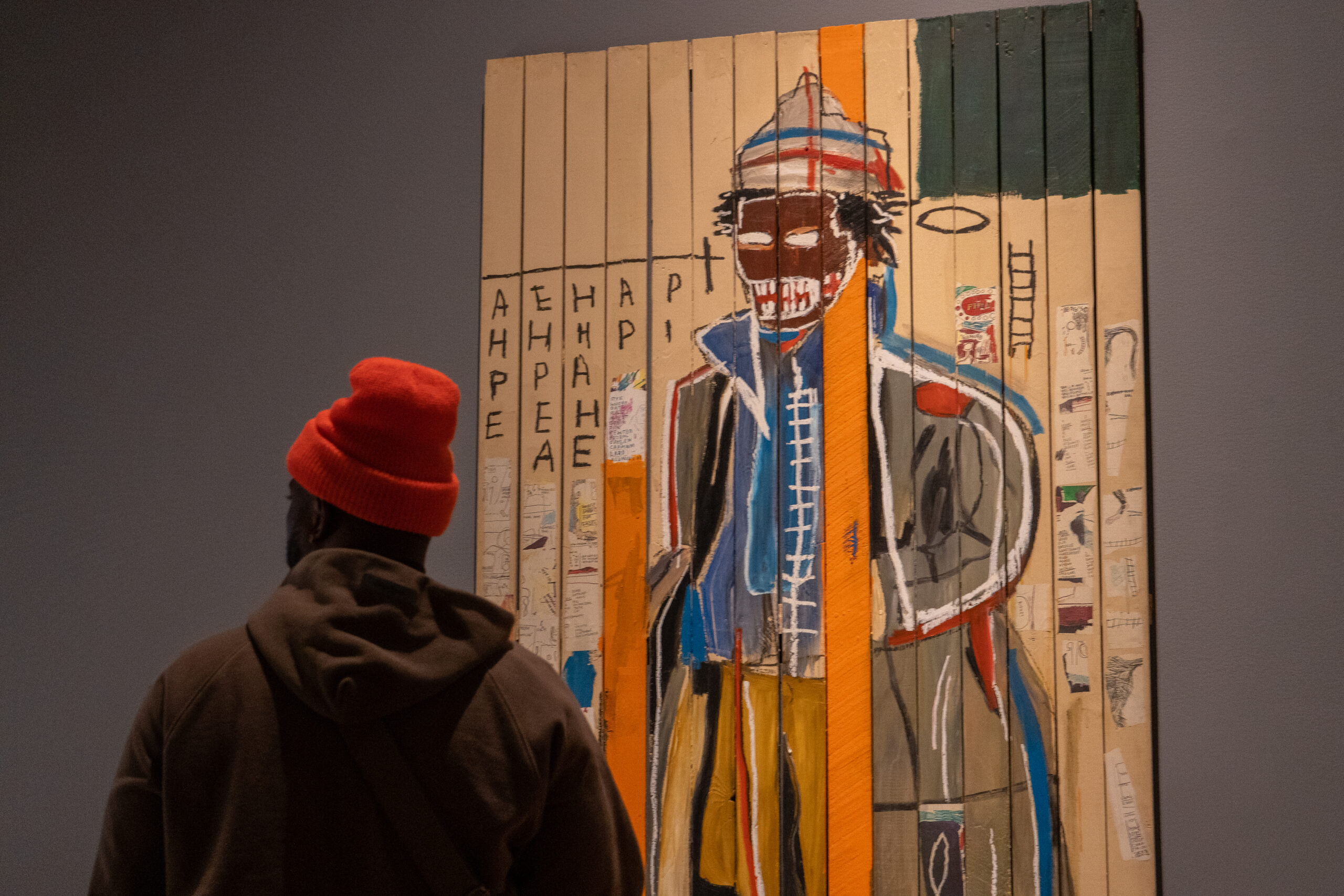Montreal Museum of Fine Arts collaborates with the Musée de la musique – Philharmonie de Paris to create the first large-scale multidisciplinary exhibition on the role of music in Basquiat’s art
Upon entering the exhibit, visitors are embraced by the first room’s black painted walls as new-wave music plays. The smell of paint lingers in the air as people gather to admire the artwork while music from punk band The Offs plays loudly in the background.
This is how curators decided to open Seeing Loud: Basquiat and Music, an exhibition centered around the major role that music — be it opera, jazz or hip-hop — played in Basquiat’s life and work.
Spectators are propelled into the musical universe of Basquiat’s era and the New York underground scene of the 1970s and 1980s that inspired him throughout his artistic career.
The walls are covered with colourful posters and flyers of the bands that the artist listened to and formerly collaborated with. Between his emblematic crowns and anatomical drawings, musical references start to emerge in visitors’ minds.
Musicologist and guest curator from the Philharmonie de Paris Vincent Bessières explained that the first part of the exhibit was made to give a contextual and biographical background on the importance of music in Basquiat’s life, while the second part centers on how music oriented his pictorial universe.
From his band Gray to his appearances as a DJ, nothing is forgotten in the extensive discography that has found its way into the artist’s work.
The scenography uses a multidisciplinary approach that reflects Basquiat’s own methods.
Visitors are projected into an atmosphere by the music playing in each room while videos and archives play everywhere.
Visitors Ismaila Diallo and Anastasi Eosforos said they particularly appreciated the exhibition’s scenography and the way the different parts were orchestrated.
“Seeing urban art in a museum was fun,” said Diallo. “You would think there’s kind of this clash between the two, but it was very well executed.”
Jazz specialist Bessières explained that, even though Basquiat was a painter of his time and was involved in a dynamic and creative environment, he brought past music to the canvas.
“Looking at Basquiat through the prism of music allows at the same time to talk about the social journey of his life but also an interpretive key that allows us to understand things about his work,” said Bessières. “Jazz is really the music that he most celebrated, quoted, and represented in his works.”
For Bassières, these visual references to African-American culture and music are part of Basquiat’s wider connection to his identity as a Black man.
The exhibition shows how music in Basquiat’s mind connected him to the world as an artist but, more importantly, as a Black artist living in America.
Seeing Loud runs until Feb. 19, 2023. Tickets are $16 for 21 to 30 year olds while general entry is $24. For more information, visit the MMFA’s website.
